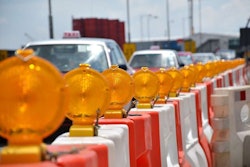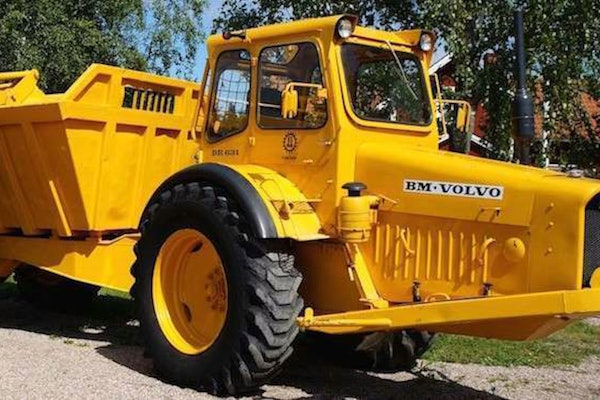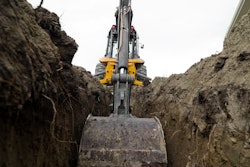 A subcontractor on this bridge and road project in Ridgefield, Washington, was cited for trench violations. The company has appealed the citations. Photo: Clark County government
A subcontractor on this bridge and road project in Ridgefield, Washington, was cited for trench violations. The company has appealed the citations. Photo: Clark County governmentA Washington construction firm has been fined $126,400 in safety citations after five instances when workers, and in one case the company’s owner, entered trenches with no cave-in protection, according to the Washington State Department of Labor & Industries.
Colf Construction of Vancouver was also cited for not performing daily excavation inspections, not removing workers from hazardous areas, no safe access or exit for excavations, no fall protection, and employees working under a suspended load, according to L&I.
Colf was hired to install water and sewer lines as a subcontractor on a project to build a bridge and other roadway improvements in Ridgedfield, Washington.
L&I’s Division of Occupational Safety and Health (DOSH) began an inspection March 20, which included eight site visits, the agency said.
On four separate days, inspectors noted workers in four different unprotected trenches that ranged from 4 feet, 7 inches to 14 feet deep. There were five such incidents, occurring March 20, April 19, April 25 and August 2, the citation says. For these incidents, Colf was fined $56,000. The situations were corrected, DOSH said.
Other violations are as follows:
- No competent person was conducting daily inspections of the trenches and nearby work area. Fine: $56,000. The situation was corrected.
- On two occasions, workers were in trenches with no ladder or other means of entrance and exit. One of the trenches was 13 feet deep and the other was 8 feet deep. Fine: $4,800. The situation was corrected.
- An employee was working underneath a suspended load when positioning a manhole. Fine: $4,800. DOSH believes the situation was remedied, but if Colf incurs another similar citation, it could face steeper penalties for a repeat violation.
- An employee was standing and walking on top of a manhole and was not protected from a potential fall of 12 feet, 10 inches. Fine: $4,800. DOSH believes the situation was remedied, but if Colf incurs another similar citation, it could face steeper penalties for a repeat violation.
Colf Construction appealed the citations September 26, according to L&I spokesman Frank Ameduri.
An attempt to reach Colf for comment for this article was unsuccessful.
L&I also noted that Colf was cited in 2010 for a similar trench incident, in which an employee was working in an unprotected 6-foot-deep trench. That violation was corrected. The company was fined $150.
For the most recent violations, which were issued September 11, Colf ended up with three willful serious and three serious violations.
In Washington, fines paid for violations are placed in the state’s workers’ compensation supplemental pension fund that assists injured workers and families whose relatives die on the job.
Colf has also been identified for L&I’s Severe Violator Enforcement Program, which means it will be subject to follow-up investigations to inspect for similar violations. That “will continue at a heightened level until the department is satisfied that the conditions no longer exist,” the citation says.
“Trenching and excavation incidents can happen suddenly, and cave-ins are often deadly,” said Anne Soiza, DOSH assistant director. “This employer knew the dangers and had been warned before.
“Every employer that does trenching and excavation needs to know there are many complex deadly hazards that must be taken seriously and controlled. These hazards are a focus for the department and nationwide due to their high rate of worker fatalities.”










